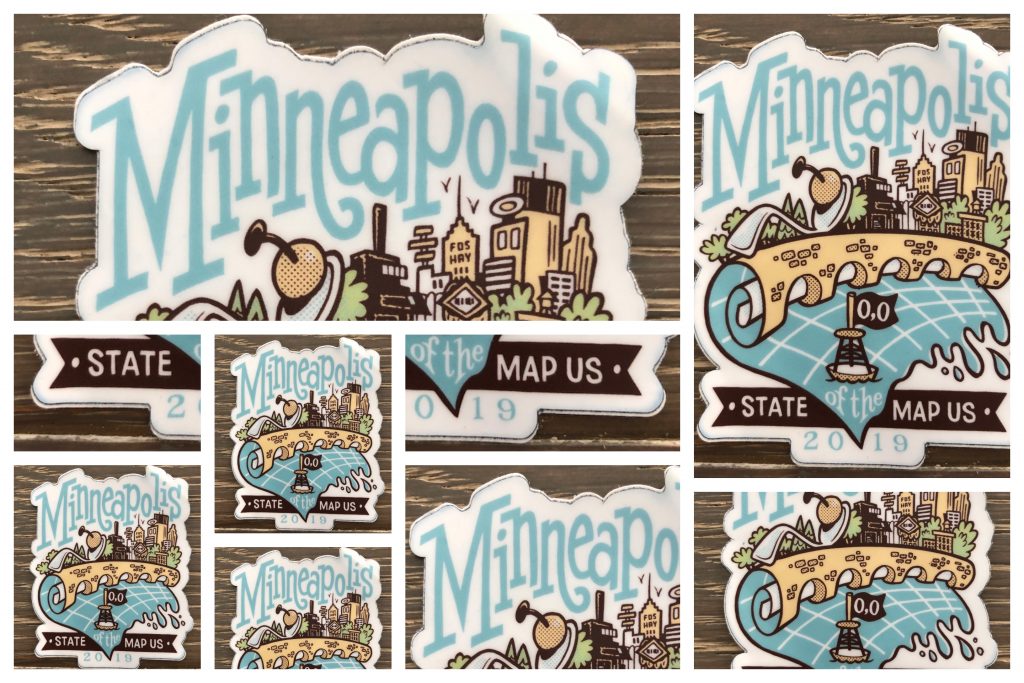MINNEAPOLIS — Spend enough time numbing your nates at tech conference keynotes and you’ll notice a few patterns. Start with a folksy approach. Sure there are hundreds or even thousands of people assembled, but we’re just among friends. Dose heavily with an element of cheerleading which, even if done right, has the obvious, self-congratulatory vibe of a wedding toast. Then inspire with “to infinity and beyond” predictions on future growth. Sprinkle in some “Star Wars” references or a nod to 90s manga and you can pretty much interchange them.
What you really need to address is who isn’t in the room. And why they’re not there. OpenStreetMap interim executive director Maggie Cawley did just that.
“OSM is still a pretty well-kept secret in many places. I want to understand why people are not yet part of the OSM community and allocate resources to outreach, education and activism.”
“For the OpenStreetMap community in the US grow and thrive, in practice this means more members. More mappers. Higher attendance at State of the Map US. It also means more local events, partnerships, districts, collaboration with government, with educators and with the adjacent communities,” she said kicking off the plenary session.

She’s not prescribing solutions from on high, though. Cawley, with bright eyes framed by corkscrew curls that suggest restless energy, spends a lot of time listening. To members in remote communities who are doing conservation work to improve OSM but don’t have any local support. To folks in big cities who want to know how to support the larger goal of better data. To teachers. To NGOs. Over Slack. Via email. In person.
And she’s right to be asking more questions than offering answers: Cawley stepped into the hot seat about five months ago after the whiplash tenure of the organization’s very first exec director. Even with extensive grounding in the OSM community (a two-year tenure as a board member, a place on the steering committee for Teach OSM etc.) she launched into her talk by admitting she had little idea of what she was getting into.
So, where is everybody?
Good Morning #SOTMUS 👋👋👋 pic.twitter.com/gpIjEfn3to
— Jonah Adkins (@jonahadkins) September 6, 2019
This was my first SOTM US. It’s a close cousin to the SOTM I attended in Milan last summer, ticking off all the boxes for what makes a good conference. Venue, accommodations, interesting range of speakers, friendly overall vibe, good food, social activities. But I had the same reaction: Why are there only a couple hundred people here? Everyone should come!
Cawley got a laugh from attendees by asking, “How many people in this room have tried to explain OSM to your friends? How did that go over?” Fair enough. Having sat at a booth for eight hours answering this very question to the most general of publics at a local earthquake safety fair, I get it. My lowest common denominator for the day was: You can print out a map of your neighborhood and stay safe in an emergency. Forget talking about open source. Forget explaining that it’s a database. Stick to the map.
Clearly, this isn’t an explanation that would (or should) work everywhere, but the point is: we’re talking about maps. How we use maps has changed (ahem) since the pocket supercomputer era, but we’re still talking about a representation of the very ground we walk on. People get that. Now, whether they see the proprietary, built-in maps they use every day as more informative, user friendly, or useful is all on us. Still. After having spent five years spreading the glassy eye by talking about open-source compute, networking and storage software at the OpenStack Foundation, I have a hard time understanding why OSM isn’t more accessible or ubiquitous. (At the OSF’s hype-cycle peak, something like 8,000 people came to the Summits.)
Too many interesting talks to choose from this morning! 🤔 #SOTMUS
— Wes (@Wes_Port) September 8, 2019
In part, it’s because the US has a proprietary bias. We just want things that work. We don’t care so much who provides it and believe that the most prominent name has, in effect, won. This isn’t so much the case in Europe, where folks tend to be more skeptical of the man, especially if that man is a large American corporation with a for-profit agenda.
In my days as a volunteer for the Free Software Foundation Europe – often involved handing out chocolate chip cookie recipes with the four freedoms at everything from neighborhood fairs to FOSDEM – you would easily come across people in local governments and schools who already knew what you were talking about because they used free software for cost-cutting as well as ideological reasons.
Chatting with one of the AP geography teachers at SOTMUS who came with the idea of using OSM in the classroom, the main obstacle seems to be the bullet-point based curriculum that ESRI software is continually adapting to meet. OSM might figure in for an extra-credit project, but would be hard to toss in on that kind of timetable.
Get moving
Cawley ended with a call to action that still resisted the rah-rah: “It’s an exciting time to be part of OpenStreetMap. There’s so much for us to do. I invite all of you to tell others about OSM, join the committees, meet up with other mappers in your town, run for the board in February. Teach someone new to map.”
More resources on how to get involved with OSM here.
Stay tuned for more posts from sessions at the conference – there is so much great material.
